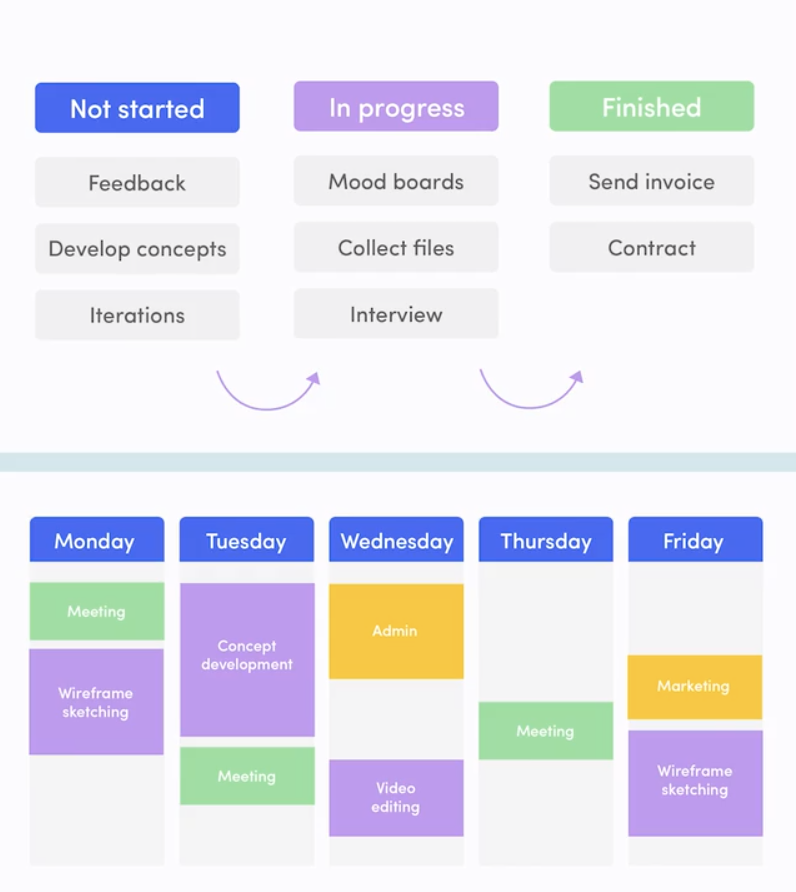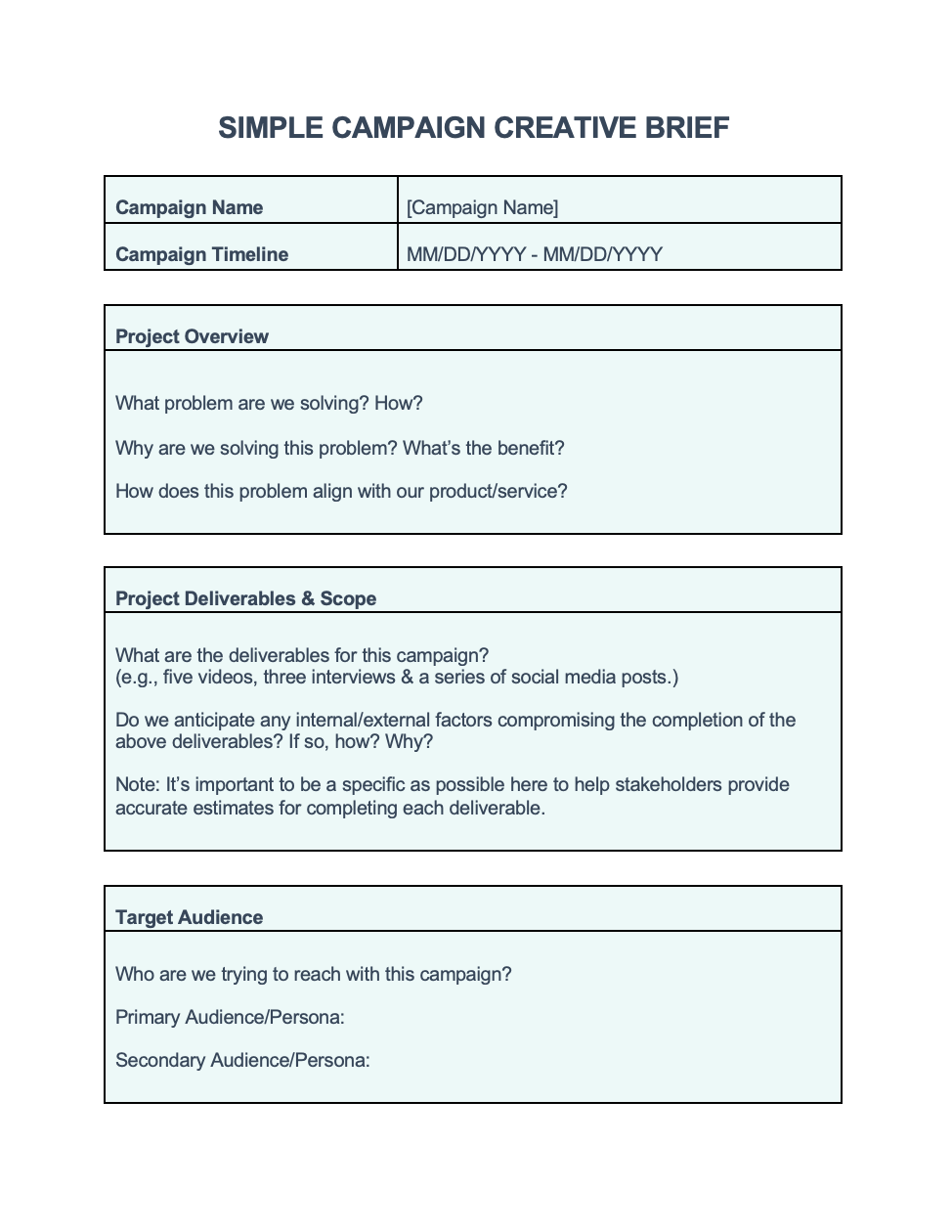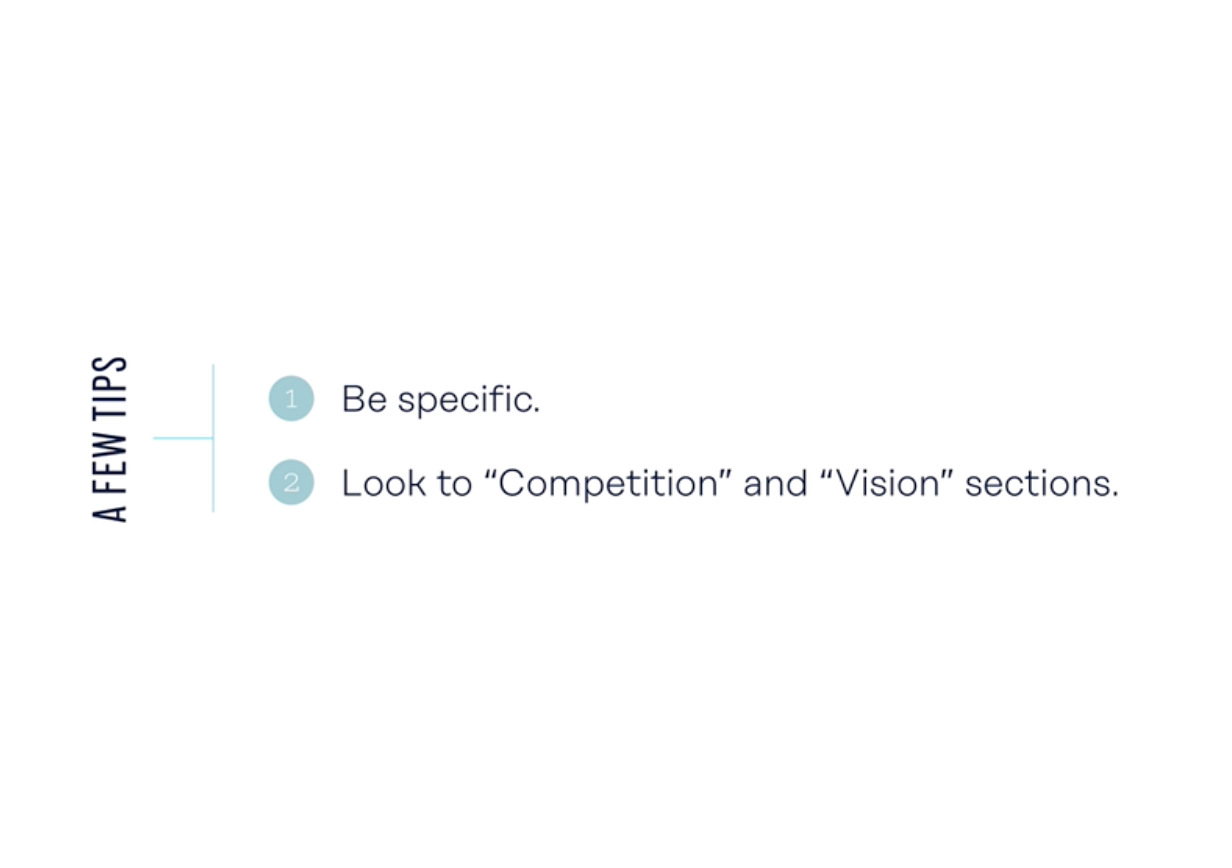Updated: Apr, 25 2022
Guide: How to Write a Creative Brief (With Examples)
Learn how to write a creative brief and use creative brief templates to help make the crafting of your own easier.
If you work in the design industry—or really, any creative field that involves direct client interaction—a creative brief can be a valuable tool that ensures you deliver an exceptional product every time. A creative brief outlines a client’s vision for a project, keeping you and the client on the same page. Below, learn how to create a creative brief, when to use one, and how it can help you exceed client expectations.
What Is a Creative Brief?
A creative brief is a short, one- to two-page document that serves as the blueprint for a creative project. It documents the client’s vision and ideas for the project and provides the designer with set parameters and guidelines for the finished product. It typically includes elements such as the project’s purpose, goals, intended audience, messaging guidelines, and deliverables.
Why Are Creative Briefs Important and When Would You Use One?
The creative brief gets every stakeholder involved in the project on the same page. Based on the brief, everyone should understand what the project includes, the timeline of the project, and the vision for the deliverables. That helps eliminate problems like scope creep (continuous changes to a project’s scope or requirements) and helps ensure that everyone is satisfied with the end result.
Creative briefs are beneficial in many scenarios, but are particularly helpful for large, involved, design-heavy, or highly conceptual work (e.g., logo design, branding, or website design). Without a creative brief in these situations, you may not know where to start or feel confident that you truly understand the client’s vision. For smaller or more defined projects—like a single email or an ad graphic—it may not be worth spending the time to craft a creative brief.

Get Organized and Stop Scope Creep
Project Management for Designers
Creative Brief Examples
Creative briefs can differ based on each unique project and your line of work—design versus copywriting versus UX, and so on. To see how these documents can vary, check out a few creative brief examples.
Hush Puppies
In just one page, this fictional creative brief for the shoe brand Hush Puppies outlines the requirements for a brand awareness campaign. It identifies the target audience, the main message, the unique benefits of the shoes, and the precise design elements that will be delivered.
A fictional creative brief for the shoe brand Hush Puppies.
Quaker Oats
A less traditional take on a creative brief, this document outlines a campaign to help Quaker Oats increase sales. This brief heavily relies on statistics to define the problem that the client wants to solve: enticing busy people to slow down and enjoy Quaker Oats.
A creative brief for Quaker Oats that embodies an infographic style.
Syrguide
Simple and concise, this creative brief expertly defines the exact deliverables for the project: a logo, stationery, and 30-second motion trailer for the company. It’s clear, simple, and easy to skim, while still including all of the necessary information.
A simple, concise creative brief for Syrguide.
How to Write a Creative Brief
While a creative brief may sound simple—it’s just a one-page document, after all—compressing the entire vision for a project in just a page or two can be challenging. Here’s a guide to help you craft an effective creative brief.
Step 1: Determine the Sections You Want in Your Brief
Creative briefs exist to make your job easier, so you ultimately get to decide what to include in your document. This tutorial focuses on the following section:
- Background
- Objective
- Message
- Target audience
- Tone
- Means
However, you have creative control to add or remove sections. The important part of this step is determining what information will be most helpful to you.
Step 2: Develop the Background and Objective
First, define the client and their current situation in one to three sentences. Are they opening a new store? Launching a new product? It doesn’t need to be an in-depth history of the client, but rather, a brief look at who they are and what they are doing right now.
Then, move on to the objective: What is the client trying to accomplish? While this sounds straightforward, take the time to think beyond the deliverable to define the client’s why. For example, a client may ask you to create a new logo—but there’s more to it. Maybe the client wants to connect with a different audience or develop a more modern look and feel for their brand. That is the true objective and the goal you should keep in mind as you move the project forward.
Step 3: Hone In on Your Target Audience
To create an effective design or deliverable, you have to understand who you’re talking to. Defining the audience is a critical piece of most creative briefs. In this section, get specific about the client’s ideal customers. You don’t have to include every detail about the audience here; instead, focus on the most compelling details that will have an impact on your design or creative process. For example, you may want to include details about the audience’s shopping behaviors, like their ideal price point or other brands they regularly purchase, but omit irrelevant data like their shoe size or eating habits.
If your client has multiple audiences, make sure to define each and rank them in order of importance.
Step 4: Define Your Message
Now, take what you know about the client and their goals and distill it into the one big idea that the client wants to convey through this project. Make sure the message isn’t just a description of what the client does (e.g., “Company X is a pediatric healthcare provider”), but that it includes what makes the company unique within the industry (e.g., “Company X improves the quality of life for children and their families by delivering timely, affordable pediatric care”).
While you get to be a little more creative in this section, it’s still important to keep it short and to-the-point—ideally just a sentence or two.
Step 5: Establish the Tone
Tone is a critical element to establish for any type of creative project, from graphic design to copywriting. In this section, generate a list of adjectives that describes how the client wants to be perceived—e.g., feminine, industrial, nostalgic, or vibrant. Together, these words define the overall personality that the client wants to project. Aim to narrow this down to five or fewer words, and refer back to this section often to make sure your work aligns with those traits.
Step 6: Solidify the Means
This section defines the project deliverables. Don’t overthink this; it should be straightforward. Are you designing a logo? Writing a series of three emails for a marketing campaign? Producing an introductory video for the company website? You simply need to establish exactly what you will produce and deliver to the client by the end of the project.
Step 7: Edit, Edit, Edit
Once you’ve completed all the sections of your creative brief, take another pass through it. The goal is to keep it as simple as possible, and at least the first few times you write a creative brief, you will probably include far too much information and extraneous details.
Look through each section and ask yourself:
- Is it clear?
- Does it address the primary objective of the section?
- Is it as simple and straightforward as possible?
Ultimately, remember that you and the client will be held to this document throughout the project, so it should be understandable, feasible, and functional.
Creative Brief Templates That Will Make Your Life Easier
Video Creative Brief
This video creative brief template from Studio Binder includes the basic elements explained above, along with some video-specific components, like the “visuals” section. This portion of the brief serves as a mood board, allowing you and the client to hone in on the types of imagery you envision for a video.
This creative brief template includes sections for video-specific components.
Campaign Creative Brief
A campaign brief differs from other types of creative briefs in that it often has to encompass multiple deliverables. A campaign might, for instance, include a few videos, a series of social media posts, and other promotional graphics. This campaign creative brief from HubSpot covers multiple deliverables and aims to hone in on the overall campaign concept and unified theme for all of those deliverables.

This campaign creative brief template aims to hone in on the campaign’s overall theme and message.
Design Creative Brief
Design briefs focus a bit more on the visual elements of a deliverable. The first page of this template from Smartsheet is similar to the previous creative brief templates, but the other pages of the template cover design preferences for imagery, photography, and multimedia.
This design-focused creative brief template includes additional sections for notes on imagery and multimedia.
Taking the time to craft a creative brief is beneficial for everyone involved in the project. With a better understanding of the client’s vision and goals, you can create a deliverable that exceeds expectations—leaving you and your client happy every time.

Get Started Today!
Design a Brand Identity: Write an Airtight Creative Brief
Try Skillshare for free! Sign up for a 7 day free trial today!
Get Started- Unlimited access to every class
- Supportive online creative community
- Learn offline with Skillshare's app
